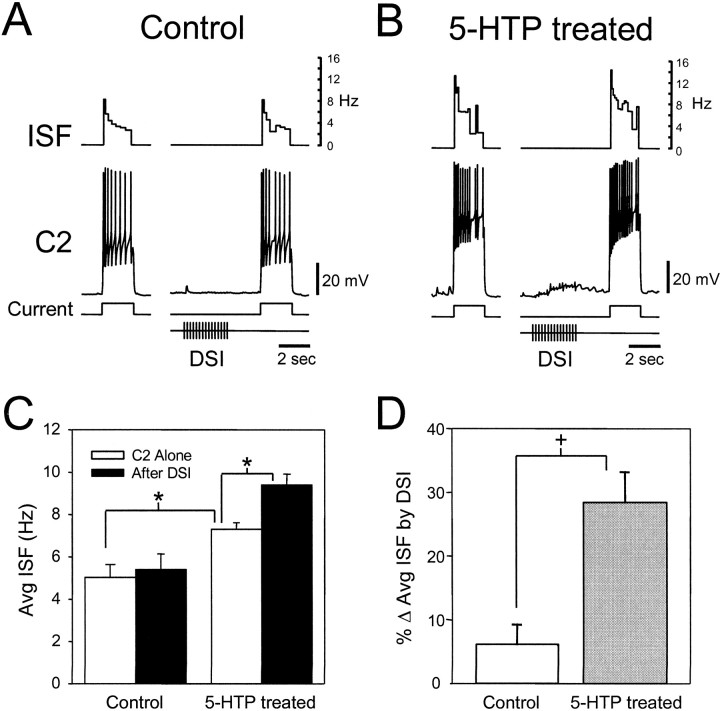Fig. 4.
5-HTP treatment increases C2 excitability and the potency of DSI neuromodulation. A, Under conditions designed to limit swim CPG activity, DSI has little effect on C2 excitability. C2 excitability is quantified as the spiking response to a 2 sec 2 nA depolarizing current pulse applied every 60 sec. The inverse interspike interval or instantaneous spike frequency (ISF) is displayed in the top trace. Stimulation of a DSI (15 pulses at 5 Hz, ending 2 sec before C2 depolarization) has no significant effect on the spiking response of C2. B,After 5-HTP treatment (2 mm, 30 min, 20 hr before measurement), the same stimulation paradigm results in an increase in basal C2 excitability and a further enhancement of C2 excitability by DSI. C, 5-HTP treatment enhances the average basal C2 ISF and its modulation by DSI. Under control conditions, the average ISF was not significantly different if C2 was stimulated alone (white bar) or if preceded by DSI stimulation (black bar). After 5-HTP treatment, the average C2 ISF increased significantly when C2 was stimulated alone. A further significant increase was seen when C2 was depolarized after DSI stimulation. The asterisk indicates a significant difference (p < 0.05, one-way repeated measures ANOVA with Tukey post hoc test;n = 6). D, 5-HTP treatment significantly increases DSI neuromodulatory enhancement of C2 average ISF (p = 0.002, n = 6; paired t test). The data in D represent a further analysis of the data shown in C and depict the enhancement of C2 average ISF (% Δ Avg ISF) by DSI activity before (Control) and 20 hr after 5-HTP treatment (5-HTP treated). All recordings were obtained in normal saline.

